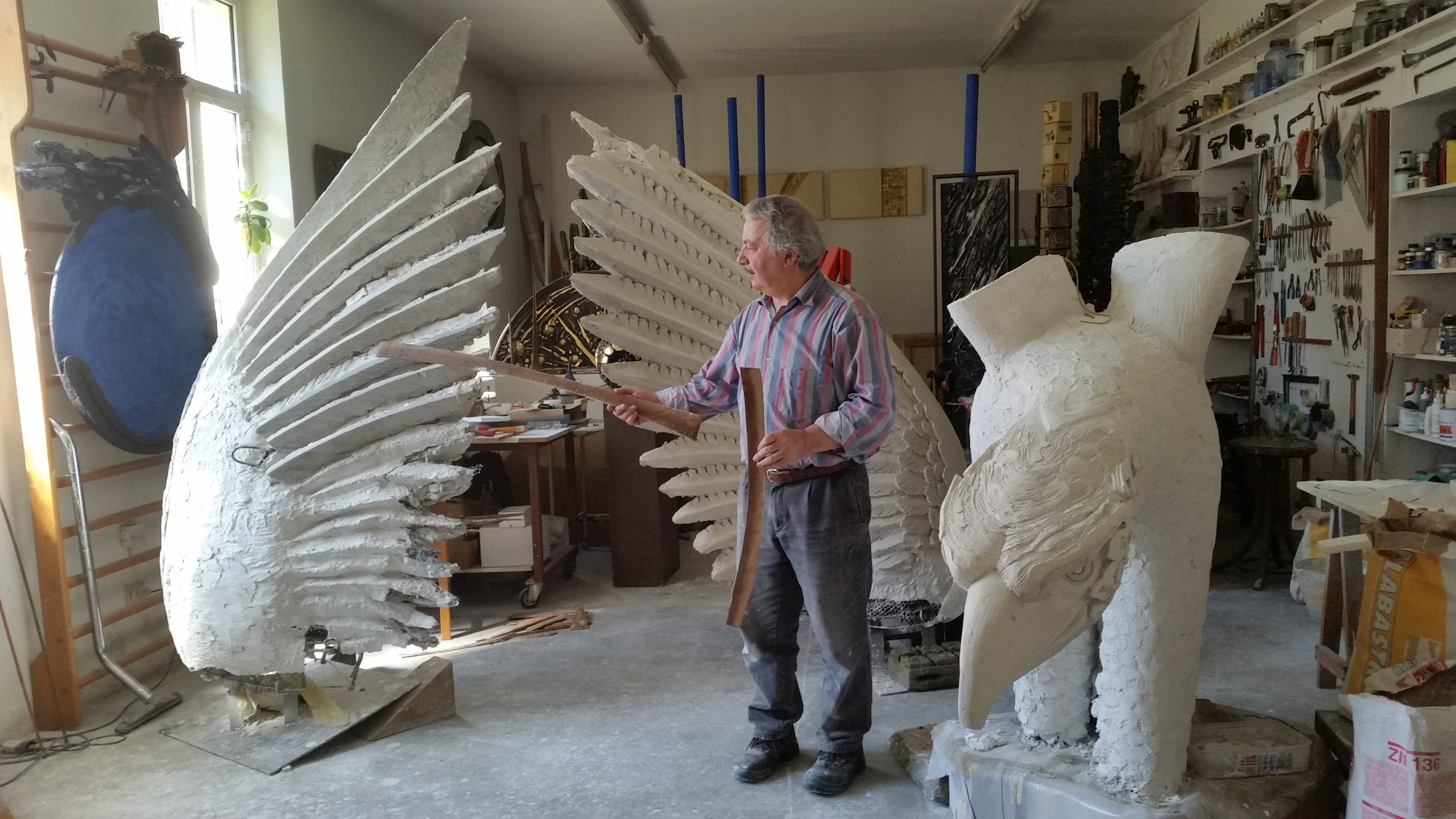Pino Di Gennaro was born in Troia (FG) in 1951. He studied at the Art High School in Milan and graduated in sculpture from the Brera Academy of Fine Arts.
During his time at the Academy, he actively participated in the school’s renewal movement and, with some friends, formed the Gruppo B7 Collettivo dell’Accademia.
In 1982, together with Milanese artists Galbusera, Jannelli, Miano, Pizzi, and Zanini, he founded the “Gruppo Atelier,” a space for discussion and debate on artworks and artistic poetics, welcoming both figurative and non-figurative experiences.
The group made its public debut with the exhibition “Atelier” at Palazzo Dugnani in Milan in December 1983 and has continued to exhibit in major cities such as Milan, Turin, Berlin, Madrid, Valencia, Barcelona, and Würzburg.
The Group promotes the many “Venature” exhibitions, featuring artists with diverse artistic approaches each time, to offer a multidimensional overview of Italian and European artistic activity, both in terms of content and language.
From 1972 to 1987, Pino Di Gennaro worked in the studio of sculptor Arnaldo Pomodoro, a pivotal experience that significantly influenced his artistic development. During the same years, he was appointed Pomodoro’s assistant for the set designs of: “Das Käthchen von Heilbronn” by H. von Kleist, Zurich, 1972, directed by L. Ronconi; “Semiramide” by G. Rossini, Rome, 1982, directed by R. Guicciardini; “Orestea-Agamennuni” by E. Isgrò, Gibellina Ruins, 1993, directed by F. Crivelli; and “Alceste” by C. W. Gluck, Genoa, 1987, directed by V. Puecher.
Among the awards received, the most notable is the 1st Prize for Sculpture at the XXXIX Premio Sulmona 2012, awarded by the Senate of the Republic Medal, for the work “Vento Cosmico” (2007). The jury, composed of President Vittorio Sgarbi, Ivo Bonitatibus, Toti Carpentieri, Giorgio Di Genova, Giorgio Seveso, Chiara Strozzieri, Duccio Trombadori, and Secretary-General Gaetano Pallozzi, motivated their choice as follows: “The work is awarded for the elegance of its craftsmanship, combined with skill in the lost-wax bronze casting technique.” September 29, 2012.
Alongside his artistic research and exhibition activities, he is also dedicated to teaching.
Artistic Expression
Pino Di Gennaro’s works are the skilful result of modelling soft materials, such as clay, plasticine, papier-mâché, and wax, combined with the artistic craftsmanship of metals, including lead, aluminium, steel, and bronze.
In highlighting the expressiveness of each material, the sculptor pairs humble materials with noble ones: papier-mâché and steel, wax and bronze, and papier-mâché and lead.

He prefers bronze for outdoor works, utilising the lost-wax casting technique to explore its many expressive possibilities. He enhances the colour of the material when treated with acids and pigments, and through mirror polishing, he brings out its brightness and preciousness.
The hand serves not only as a tool but also as a powerful means of expression. It shapes formless matter, acting as a secondary brain that learns, processes, and engages with the material in a way that resembles a body-to-body encounter. This interaction aims to enhance the expressive potential of the hand while creating an inevitable, “erotic” interplay between the hand and the material.
The colours of papier-mâché, the brightness of bronze, the transparency of wax, and the opacity of lead are not seen here as qualities of the materials themselves, but as expressive possibilities of matter, creating a fascinating dialectic between fragile and hard matter, poor and rich, classical and contemporary.
A democratic practice where the material guides the artist’s hand towards the epiphany of form.
Within the expressive field of abstraction, Di Gennaro plays a gamble with formless shape, intervening with the uncertainty of abstraction, working informally with figurative allusions, opting for an allegorical vision where the sculptural mass testifies to the human need to live in energy and light.
He also deepens his study of ancient civilisations through writing: the surface becomes an epigraph, covered with messages, mysterious graffiti with sign alphabets and archaic ideograms; a resistance to virtual writing.
The artist’s approach is centred on the social function of sculpture in urban spaces, aiming to enhance the aesthetic quality of places, improve the identity and quality of life of inhabitants, and foster a more dynamic relationship between sculpture, architecture, and the viewer through moments of interaction.
In recent years, his activity has expanded to include a new experience: art as a form of healing, experimenting with and using clay therapeutically with young adolescents who are victims of bullying, an activity carried out in the paediatric workshop at Fatebenefratelli Hospital in Milan.
His interest in nature, trees, and bees focuses on drawing attention to the fragility of the planet and its living beings.
Art takes care of the soul and the planet with an ethical and civil poetics.
